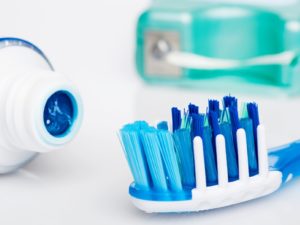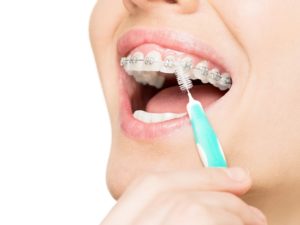Type of Braces
First Days With Braces and Foods To Avoid
Brushing and Flossing with Braces
Pick Your Brace Colour!
Types of Braces
Not many people are lucky to be born with perfect teeth. Orthodontic treatment can make a tremendous difference to you or your child. Dr. Berka will be able to make a diagnosis and formulate a treatment plan to address and correct all issues with the teeth and the bite. The treatment plan may include any of the following types of braces or dental appliances to help correct your particular problem.
Metal Braces
Ceramic or Clear Braces
Invisalign or Clear Retainers
The First Few Days With My Braces
When you get your braces fitted or receive your Invisalign aligners by Milton Orthodontics, you may feel general soreness in your mouth and teeth may be tender to biting pressures for three to five days. If there is tenderness, take Tylenol (acetaminophen) or whatever you normally take for headache or similar pain. We recommend that you eat soft foods that do not require a lot of chewing (e.g. soup, soft pasta, mashed potatoes) until the soreness is gone. Avoid tough meats, hard pieces of bread and raw vegetables.
For braces: the lips, cheeks, and tongue may also become irritated for one to two weeks as they toughen and become accustomed to the surface of the braces. We will give you wax to help with this. Dr Berka and Milton Orthodontics will provide you with wax for you to put on the braces to lessen the rubbing of your braces on the inside of the surface of your mouth. Milton Orthodontics will show you how to apply the wax on your braces if you have forgotten.
Foods to Avoid with Braces
Which foods should I avoid?
It’s a good idea to skip foods that can damage or dislodge braces. Hard foods such as candy, raw carrots, corn on the cob, pretzels, nuts, popcorn and crushed ice are off-limits. Sticky foods to avoid include caramel, taffy and gum. These foods can get stuck between teeth and gums or bend wires and knock bands or loose brackets. If this results in damage to braces, treatment may be extended.

Download Milton Orthodontics Information Sheet on Foods To Avoid while wearing braces.
Brushing and Flossing with Braces

Every single patient receives personalized oral hygiene instruction with one of our dental assistants at the commencement of treatment. It is important for you to brush your teeth three times daily to avoid the accumulation of food particles on your teeth and braces. All patients with full braces receive an Oral-B electric brush included in the cost of the treatment at Milton Orthodontics. We encourage you to floss and use the proxy brush once per day. You also receive proxy brushes, floss, floss threaders and mouthwash throughout your treatment. We assess your oral hygiene at every appointment and teach you how to improve if needed.
Poor oral hygiene during orthodontic treatment can lead to permanent white marks (decalcification) on the enamel of the teeth. It can also lead to puffy, red and bleeding gums. This is why good oral hygiene throughout orthodontic treatment is so important!

Do I need to see my dentist during orthodontic treatment?
Yes! Remember that going to the orthodontist is not a substitute for regular dental checkups and cleanings. If you’re going to invest time and financial resources into a healthy smile, be prepared to go the distance to achieve the best results. That means you should consult your dentist for a schedule that’s appropriate for you. Patients in active orthodontic treatment benefit from more regular dental cleaning with your family dentist every 3-4 months.
Want to learn more about brushing with braces see miltonbraces.com
Coloured Braces – Cool What Colours of Braces Can I Get?
Many patients enjoy their orthodontic appointments as they get to choose what colour to put on their braces.
Some pick colours around the season (red and green for Christmas; orange and black for Halloween) or what makes them feel good.
3M offers a customizable tool to help you select your colours however our orthodontic hygienist have many great tips, when you see them at your next appointment. Give it a try!

